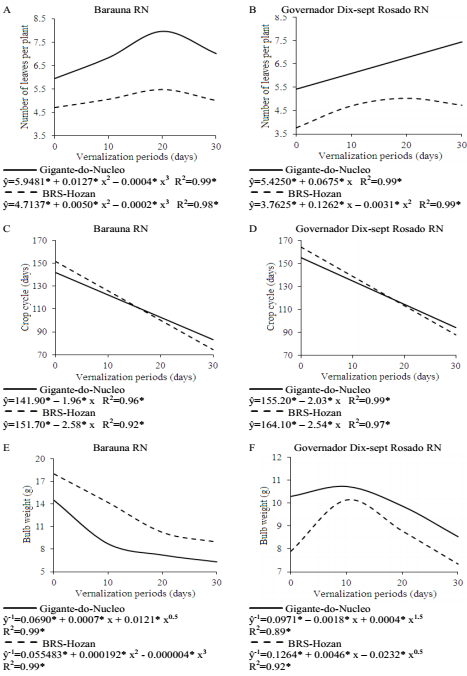ABSTRACT:
The objective of this work was to evaluate the development and production of semi-noble garlic cultivars subjected to different bulb-seed pre-planting vernalization periods in two municipalities (Barauna and Governador Dix-sept Rosado) of the Western Mesoregion of Rio Grande do Norte State, Brazil. Therefore, two simultaneous experiments were conducted, from April to November, 2012. A complete randomized block experimental design was used with four replications. The treatments were arranged in split-plot design, with the plots consisted of cultivars (Gigante-do-Nucleo and BRS-Hozan) and subplots consisted of bulb-seed pre-planting vernalization (4±1°C) periods (0, 10, 20 and 30 days). In Barauna, the cultivar Gigante-do-Nucleo proved to be adapted, with a yield of 4.56 Mg ha-1 without vernalization, while the BRS-Hozan presented a yield of 4.42 Mg ha-1 when vernalizated for 10 days at pre-planting. In Governador Dix-sept Rosado, the vernalization of 10 days improved the adaptation of both cultivars, however, with no significant yield increases. The use of vernalization improved adaptation of cultivars in the planting locations, facilitating the emergence of plants, increasing plant height and number of leaves, however, not promoting significant yield increases, therefore, this technology should not be used for produce this type of garlic in this region.
Keywords:
Allium sativum L; Refrigeration; Yield

 Thumbnail
Thumbnail
 Thumbnail
Thumbnail
 Thumbnail
Thumbnail






